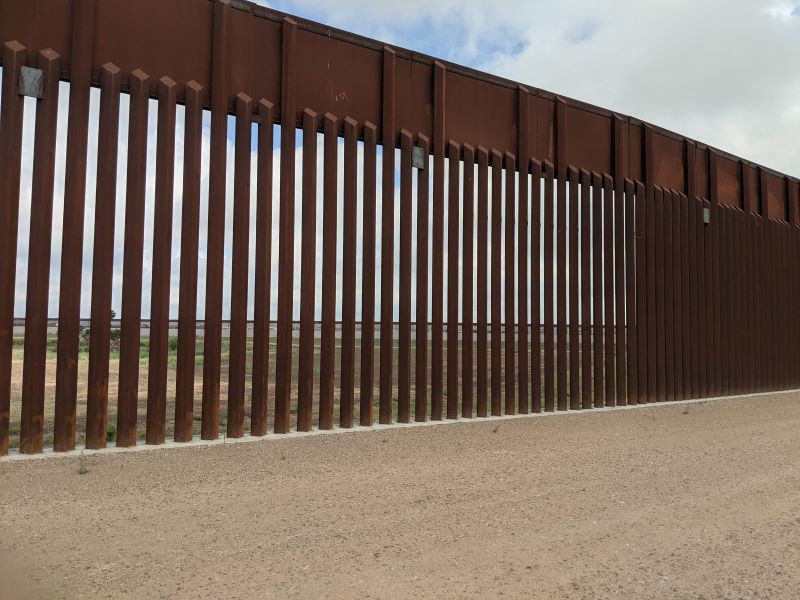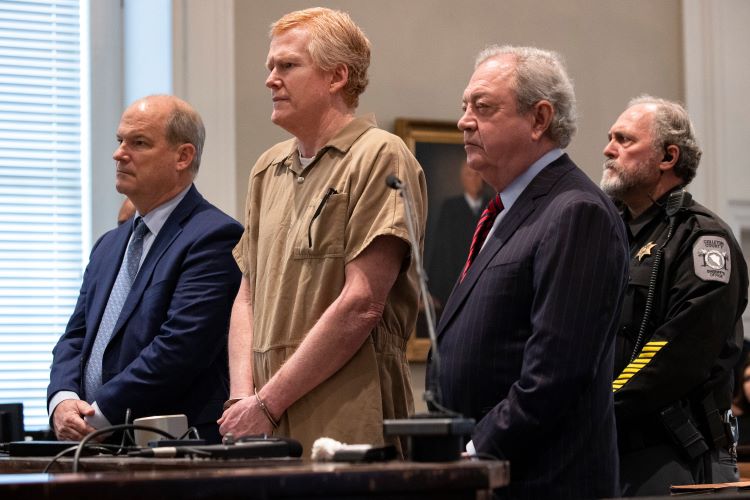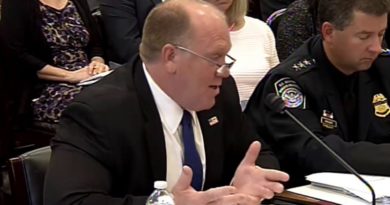The Texas Border Wall Order Against the Biden Administration You Likely Never Heard of
There hasn’t been much news about it, but on March 8, Judge Drew Tipton of the U.S. District Court for the Southern District of Texas issued an order enjoining attempts by the Biden administration to take billions in appropriations for “the construction of [a] barrier system along the southwest border” and use it for other purposes. Given renewed support for “the wall” with an election pitting candidates holding very different views on the efficacy of such barriers, the issues in this case are real and the stakes are high for all involved.
The Border-Barrier Brouhaha. Border barriers used to be a fairly non-controversial and bipartisan solution to border security, as best demonstrated by the fact that the Secure Fence Act of 2006 passed the House and Senate with support from both parties — including from then Sens. Barack Obama (D-Ill.), Hillary Clinton (D-N.Y.), and Joe Biden (D-Del.).
“The wall” only became a hot-button issue once border barriers were championed by then-candidate Donald Trump in the 2016 presidential election.
Anything immigration-related Trump liked his political opponents generally didn’t, however, and in December 2018, when Trump demanded $5 billion for barrier construction, a weeks-long government shutdown ensued.
In the end, on February 15, 2019, Trump settled for $1.375 billion for border-barrier funding, and the impasse ended. That day, though, he also issued a proclamation declaring a national emergency at the Southwest border and directing the Department of Defense (DoD) to assist in securing that border.
Ten days later, DHS asked DoD for assistance in constructing “fences[,] roads, and lighting” within 11 specified project areas, “to block drug-smuggling corridors across the international boundary between the United States and Mexico”. That was in addition to the $1.375 billion Congress had appropriated for border-wall funding.
The reprogramming of DoD funds for fence and infrastructure construction went through various legal actions but was eventually given the green light by the Supreme Court.
Of particular salience to this case, however, additional funding of $1.375 billion “for the construction of [a] barrier system along the southwest border” was included in both the Consolidated Appropriations Act 2020 (CAA 2020) and the Consolidated Appropriations Act 2021 (CAA 2021).
By December 31, 2020, DHS had used that funding to build or replace more than 112 miles of border wall, and all told, 458 miles of border barriers were built or replaced under the Trump administration, mostly “18- to 30-foot steel bollards anchored in concrete”. The majority of that construction (226 miles) was in Arizona; just 55 miles was in Texas, but much more was promised.
By the 2020 presidential election, then-candidate Joe Biden had reversed his prior support for border barriers, arguing on his 2020 campaign website that Trump’s “obsession with building a wall does nothing to address security challenges while costing taxpayers billions of dollars”.
Consistent with that statement, on his first day in office, President Biden issued Presidential Proclamation 10142, a “Proclamation on the Termination Of Emergency With Respect To The Southern Border Of The United States And Redirection Of Funds Diverted To Border Wall Construction”. Apparently in the president’s mind, there was no longer an “emergency” at the Southwest border.
In section 1(a)(i) of his January 20 proclamation, Biden directed DoD and DHS to “pause work on each construction project on the southern border wall, to the extent permitted by law, as soon as possible but in no case later than seven days from the date of this proclamation”. (Emphasis added.)
Two months after that proclamation was issued, 40 Republican senators asked Comptroller General Gene Dodaro to review the pause, arguing that it violated the Impoundment Control Act (ICA), a Nixon-era law that forces the president to use congressional funds for the purpose for which they were appropriated.
In June 2021, Dodaro ruled that Biden’s delays in spending those funds were “programmatic” and that the president was required to “perform environmental reviews and consult with various stakeholders”, and thus the pause did not violate the ICA.
While there has been sporadic wall construction since then, most notably in late 2023 in the Rio Grande Valley of Texas, those efforts have been forced and half-hearted, at best.
As the New York Times reported at that time: “The administration said that it was bound to build this section of new wall because Congress already appropriated the funding to do so in 2019. It had been unsuccessful in convincing Congress to rescind the funding”.
Department of Homeland Security Border Wall Plan Pursuant to Presidential Proclamation 10142. In June 2021, DHS issued its “Border Wall Plan Pursuant to Presidential Proclamation 10142” (Border Wall Plan), which cancelled most of the then-existing contracts for new wall construction.
Further, the Border Wall Plan explained: “DHS expects DoD will turn over multiple barrier projects, previously executed with military construction or counter-drug funding, in various stages of completion. DHS will need to absorb some potentially significant costs related to DoD’s discontinued border wall projects.”
Among those costs was remediation of the sites on which that construction had commenced, which it planned to pay for using the appropriated funding.
A July 2022 amendment to DHS’s Border Wall Plan stated that the department also intended to use that funding to provide for the “installation of barrier system attributes, which may include, as appropriate to each location, lighting, cameras, and detection technologies”. Notably absent from either document, however, was discussion of additional border wall construction.
General Land Office of the State of Texas v. Biden. Which brings me to the case in question, General Land Office of the State of Texas v. Biden.
In its July 2021 complaint in that case, plaintiff General Land Office (GLO), a Texas-state agency, alleged that the administration’s pause on border-wall construction harmed the state’s interest in a 3,099-acre farm it owns in Starr County (on the border).
GLO asked the district court, among other things, for an injunction to prevent DHS from canceling wall contracts and diverting the wall funding in CAA 2020 and 2021 to other purposes. Six months later, the states of Texas and Missouri joined GLO’s suit.
The judge hearing the case at the time dismissed the states on separate grounds and dismissed many of GLO’s claims. The states appealed, and in June 2023 the Fifth Circuit reinstated them as plaintiffs, but remanded the case back to the district court to rule on the preliminary injunction request expeditiously.
Two months later, the case was reassigned to Judge Tipton, and last month he issued his opinion and order.
The March 8 Order and Opinion. There were seven counts in the amended complaint, all of them under the Administrative Procedures Act (APA), which guides executive-branch rulemaking and provides an avenue for parties to sue the federal government.
Two of those counts were premised on constitutional grounds, one on the ICA, three others arose from the provisions of the APA itself, and the seventh was premised on the CAA 2020 and CAA 2021.
The focus of the judge’s order was on that seventh count and on the specific language of the two appropriations bills, in particular on section 209 of CAA 2020, which provides:
(a) Of the total amount made available under ‘‘U.S. Customs and Border Protection — Procurement, Construction, and Improvements’’, $1,904,468,000 shall be available only as follows: (1) $1,375,000,000 for the construction of barrier system along the southwest border; (2) $221,912,000 for the acquisition and deployment of border security technologies and trade and travel assets and infrastructure; (3) $62,364,000 for facility construction and improvements; (4) $199,519,000 for integrated operations assets and infrastructure; and (5) $45,673,000 for mission support and infrastructure.
(b) The amount designated in subsection (a)(1) shall only be available for barrier systems that — (1) use — (A) operationally effective designs deployed as of the date of enactment of the Consolidated Appropriations Act, 2017 (Public Law 115–31), such as currently deployed steel bollard designs, that prioritize agent safety; or (B) operationally effective adaptations of such designs that help mitigate community or environmental impacts of barrier system construction, including adaptations based on consultation with jurisdictions within which barrier system will be constructed; and (2) are constructed in the highest priority locations as identified in the Border Security Improvement Plan.
While Judge Tipton concluded that DHS had obligated small portions of that funding and the funding in CAA 2021 for actual barrier construction — which was consistent with section 209(a)(1) of CAA 2020 — “the remainder of the other obligations are for costs that fall outside of” that section, in particular the remediation, barrier replacement, and “system attribute” parts.
That’s not to say that any of that other spending (like the border lights, cameras, and sensors) wouldn’t be either necessary or appropriate, but as a review of the other paragraphs in section 209(a) of CAA 2020 reveal, Congress had already funded those “attributes” separately.
Paragraph (a)(1) of that provision — the bulk of the funding appropriated therein — was intended for border wall construction as described in section 209(b) of CAA 2020, in no uncertain terms. Accordingly, the court held, it could not be spent for any other purpose.
Judge Tipton stayed his order for seven days to allow the administration to seek an appeal, a stay that he extended after he issued a clarification on March 28 that his order allowed DHS to use that funding to buy land for border-wall construction.
It should be noted that Judge Tipton found the plaintiff’s ICA claim to be “unreviewable”, because that act permits only the comptroller general to file suit for violations thereunder, and then only in the U.S. District Court for the District of Columbia.
As DHS’s October wall construction in the Rio Grande Valley shows, however, the administration isn’t eager to transgress that statute.
If it stands, Judge Tipton’s order would prevent the administration from spending money Congress has appropriated for the wall for anything other than the wall. Which means it’s increasingly likely that the border-barrier construction growing numbers of American voters are demanding will be in the offing.





